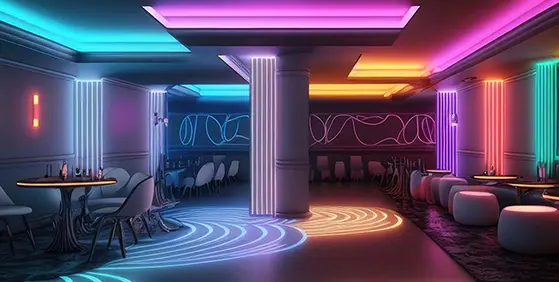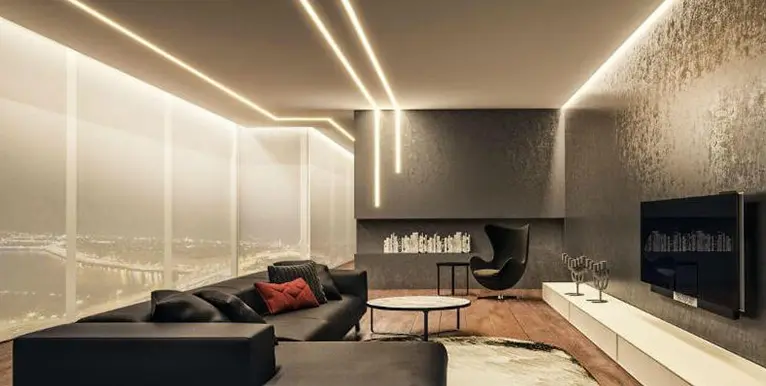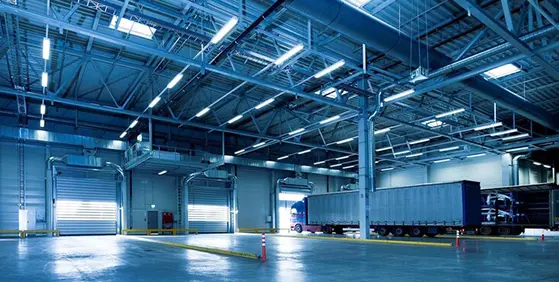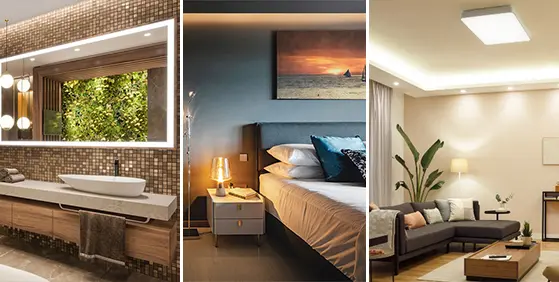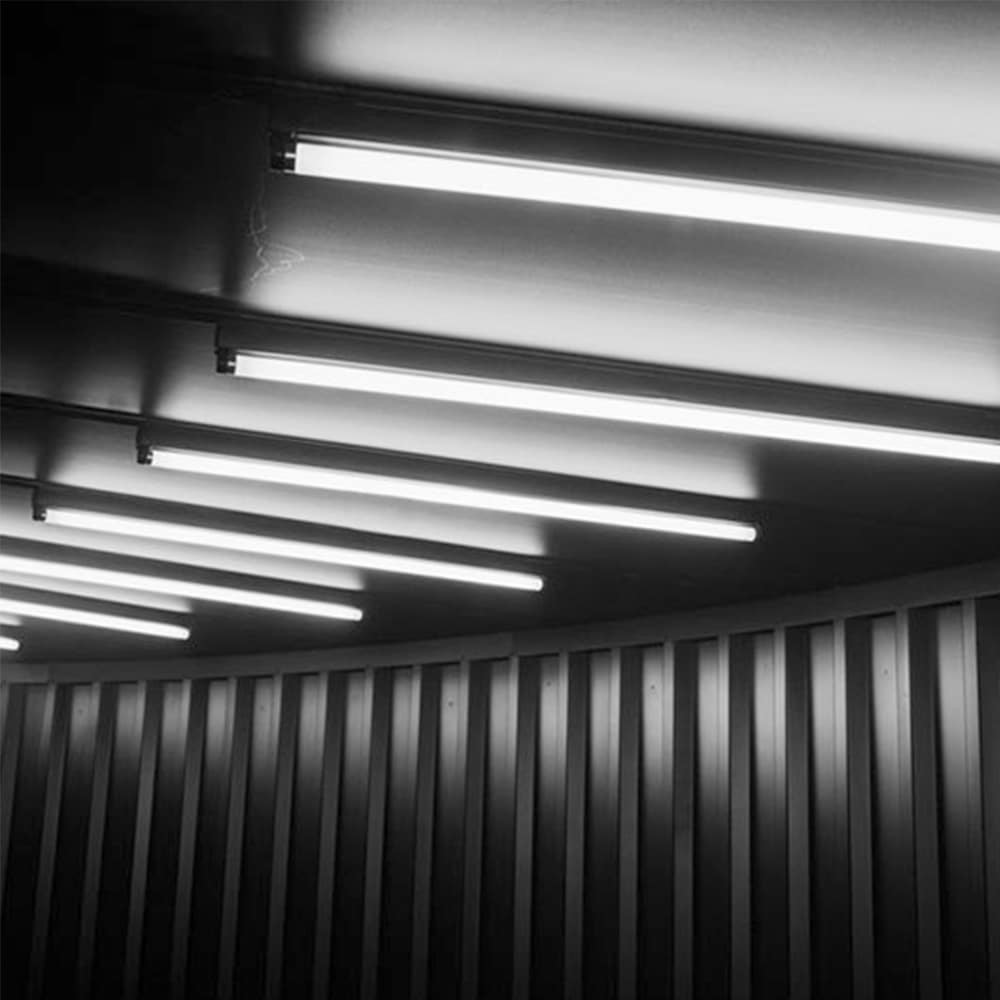So, What are LED Tube Lights? LED tube lights are fast becoming the go-to choice as a lighting solution. They offer a bright, even coverage of light across wide and even open spaces. A typical modern LED light is brighter, more energy-efficient, lower maintenance, and longer-lasting than many of the alternatives around today.

The sheer coverage and efficiency available from LED lights make them the ideal application for environments such as workshops, garages, warehouses, construction sites, car parks, kitchens, hallways, foyers, and many others.
There are many different types of LED tube lights to choose from. It is important to understand which one works best for your own needs before you buy one. Below is a short guide to help you work out which type of LED tube light will meet your requirements.
How do I Choose a LED tube light?
There are several factors to consider before buying a tube light. Whilst an LED tube light has many extensive benefits, some work better than others depending on your situation, and having an LED tube light is not the same as having a fluorescent, incandescent, or halogen light. Please see below the various parameters to consider to choose the right LED tube light for your requirement.
Consider the overall cost
Whilst LED tube lights are more expensive than other types of LED lights on the market, the lifetime cost of an LED tube is much lower in the long run due to its longevity, low maintenance, and better efficiency.
Lighting colour temperatures
The light range of LED lights is usually between 2400K and 6500K, creating an even light across their spans. It is important to consider what type of lighting you will require in your room before deciding on what type of LED tube to go for.
- 6000k will create a vibrant, clean, clinical, blue-coloured light, making it perfect for hospitals, art studios, offices, warehouses, etc.
- 4000k is still vibrant and clean, but with a little less glare. It is ideal for offices, supermarkets, shops, garages, and showrooms.
- 2700-3000k creates a warm look, with more of a red and orange light. These tones are perfect for homes, restaurants, and hotels.
Check the lumens compared to watts
The brightness for LED lights is measured in lumens, not watts. Lumens measure the total amount of light emitted by the bulb, whereas watts are the measurement of the amount of power that is consumed by the bulb. To understand what you want your desired output to be, it is recommended that you work out what the lumens are approximately equivalent to. A rough guide is:
- 40W ≈ 450 lumens
- 60W ≈ 800 lumens
- 75W ≈ 1100 lumens
- 100W ≈ 1600 lumens
- 150W ≈ 2600 lumens
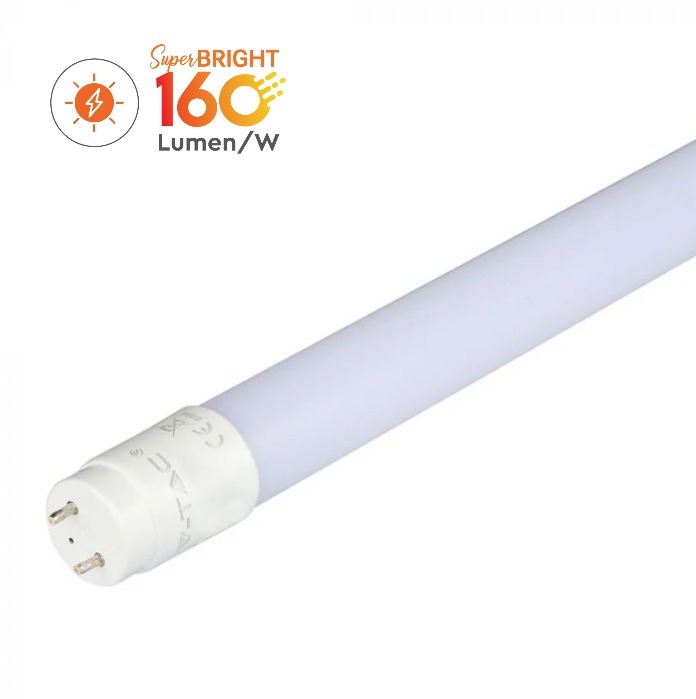
LEDs and dimming
There is no direct link between the energy sent to an LED and its brightness as there is with other lights. This means that the usual way of dimming lights by limiting the amount of electricity that is sent to it can’t happen.
In order to be able to dim your LED lights, you will need to either find LED tube lights that are compatible with dimmers or install an LED-compatible dimmer switch.
What is the difference between T5, T8 and T12 LED tubes?
LED tube lights generally have three main measurements, which are designated with a ‘T’ measurement. The three main sizes are T5, T8, and T12. ‘T’ is the equivalent to 1/8th of an inch. Broadly put, the higher the ‘T’ rating, the thicker the diameter of the tube light:
- T5 = 5/8ths of an inch.
- T8 = 8/8ths of an inch, or 1 whole inch.
- T12 = 12/8ths of an inch, or 1.5 inches.
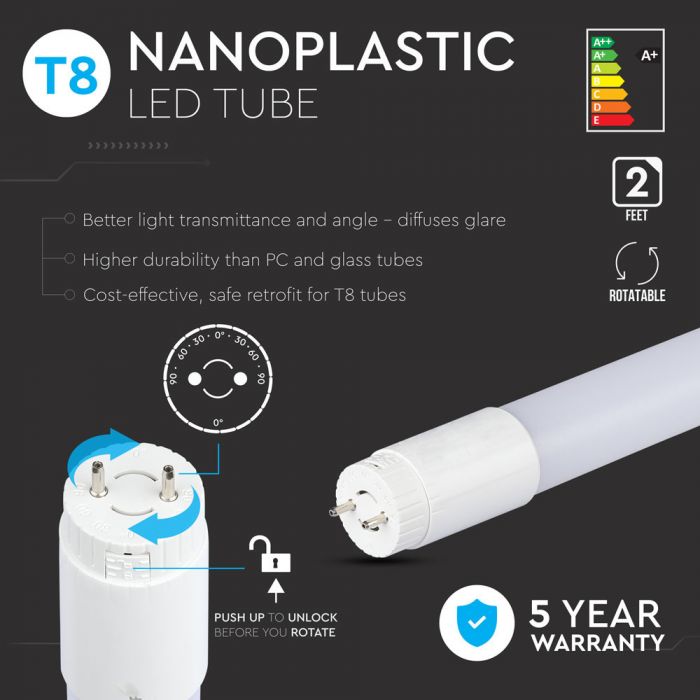
It is worth noting, however, that a smaller diameter of an LED tube light doesn’t mean that it is more energy-efficient. Whilst a T5 uses less energy than a T8, a T12 will run at almost half the energy of a T5.
What are the different types of tubes?
There are currently 4 main types of LED tubes available. Although the same in their final delivery of LED lighting, each one features its own types of installation and circuitry. Whilst the technical specifications of these different tubes may be rather complicated, it is important to know what they are and to distinguish between them all.
- Type A: LED tube with integrated driver. Compatible and operated on existing LFL ballast. This UL Type A tube is equipped with an internal driver that allows it to run off of the existing linear fluorescent ballast. The majority of these products are compatible with T12, T8, and T5 ballasts. Easiest to use.
- Type B: Ballast bypass LED tube which is wired to the mains. This UL Type B tube is powered directly from the main voltage supplied to the existing LFL fixture. As retrofitting involves wiring directly to the main voltage, it bypasses the ballast which removes any compatibility and maintenance issues. This makes it the simplest type overall.
- Type C: LED tube with remote driver. Instead of an integrated driver, this UL Type C tube uses an external driver to power the LED linear tube. It involves making electrical changes to the current fixture, but instead of using line voltage, the driver’s low-voltage outputs are attached to the sockets. This type offers the best performance.
- Type A+B: Dual mode internal driver. This UL Type A+B tube can operate off the existing fluorescent ballast and also has the ability to operate off of line voltage if the troffer is rewired to bypass the ballast.
How to fit an LED tube light?
When it comes to fitting any form of lighting, safety should always be a priority. And the same goes for LED tubes. As mentioned, LED tubes are clean, bright, and efficient when compared to other types available. Many LED tubes can be retrofitted to current fluorescent light fittings too.
- Disconnect the fixture from the power supply or mains circuit.
- Remove the old tube from the fitting. Make sure to handle it with care to avoid it breaking and lay it down flat.
- Check and remove the ballast. If it has an electronic ballast you need to remove it by unscrewing or clipping it from the housing and connecting the loose wires to make a circuit. If the ballast is magnetic, you will either need to remove or bypass that one too or just remove the starter, which should look like a standard 9-volt battery.
- Connect the new LED tube. It will have a live connection at one end and a neutral one at the other, so make sure the wires that will be fitted match these ends. If you connect the live and neutral wires to the same ends, it will create a short circuit.
- Reconnect the fixture to the power supply and turn it on to test.
- Dispose of your old tubes. Fluorescent lights cannot be disposed of in conventional garden and housing waste, due to the small amounts of mercury used. It is best to get in touch with a recycling specialist to help dispose of them. LED tube lights don’t contain any mercury, so they can be disposed of at home, although it is recommended to recycle them.
FAQs
What is the difference between LED batten and LED tube light?
An LED batten will throw light in a half-sphere shape, whereas an LED tube will offer a full sphere of light. Typically, an LED tube light is more energy-efficient than a batten.
How long do LED tube lights last?
LED tube lights last approximately 50 000 hours, which is the equivalent of 16 years.
Can you mix LED and fluorescent tubes?
Whilst you can replace fluorescent tubes with LED tubes in a fixture, it is not recommended to mix the tubes together in the same circuit. As one light will draw more power off the circuit than the other, it will cause flickering.
Which LED tube light is the brightest?
A 6000k LED tube will be the brightest.

